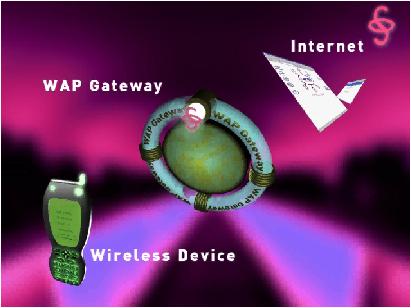Definition
Wireless application protocol (WAP) is an application environment and set of communication protocols for wireless devices designed to enable manufacturer-, vendor-, and technology-independent access to the Internet and advanced telephony services.
Overview
Positioned at a high level, this tutorial serves as an introduction to WAP, explaining its basic concept, benefits, architecture, and future.
Introduction
WAP bridges the gap between the mobile world and the Internet as well as corporate intranets and offers the ability to deliver an unlimited range of mobile value-added services to subscribers�independent of their network, bearer, and terminal. Mobile subscribers can access the same wealth of information from a pocket-sized device as they can from the desktop.
WAP is a global standard and is not controlled by any single company. Ericsson, Nokia, Motorola, and Unwired Planet founded the WAP Forum in the summer of 1997 with the initial purpose of defining an industry-wide specification for developing applications over wireless communications networks. The WAP specifications define a set of protocols in application, session, transaction, security, and transport layers, which enable operators, manufacturers, and applications providers to meet the challenges in advanced wireless service differentiation and fast/flexible service creation. There are now over one hundred members representing terminal and infrastructure manufacturers, operators, carriers, service providers, software houses, content providers, and companies developing services and applications for mobile devices.
WAP also defines a wireless application environment (WAE) aimed at enabling operators, manufacturers, and content developers to develop advanced differentiating services and applications including a microbrowser, scripting facilities, e-mail, World Wide Web (WWW)�to-mobile-handset messaging, and mobile-to-telefax access.
The WAP specifications continue to be developed by contributing members, who, through interoperability testing, have brought WAP into the limelight of the mobile data marketplace with fully functional WAP�enabled devices (see Figure 1).

Based on the Internet model, the wireless device contains a microbrowser, while content and applications are hosted on Web servers.